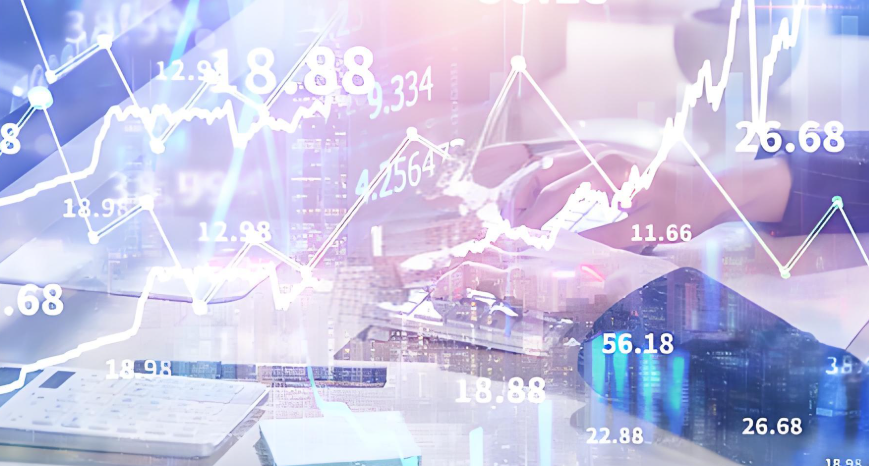The allure of the American stock market, often dubbed the world's financial powerhouse, continues to grow, attracting investments from across the globe. The figures are striking: in 2023 alone, U.S. stock funds saw a staggering influx of $440 billion, a figure that eclipses the previous year's records, demonstrating a continuous trend of capital flowing into U.S. equities while other international markets struggle to keep pace.
This phenomenon is not simply a random occurrence; it represents a substantial shift in the global investment landscape. As funds exit from various markets, including Europe and Asia, they appear to be rerouted toward the United States. The reasons behind such a trend are multifaceted, encompassing strong performance metrics in the U.S. and broader economic uncertainties around the world that make investments in the U.S. appear more desirable.
The American economy has established a robust reputation not only for its size but for its resilience and capacity for innovation. For a long period, the market capitalization of U.S. publicly listed companies has soared, now exceeding the aggregate market values of corporations in many other nations. As of late 2023, the total market capitalization of U.S. companies reached an extraordinary $63 trillion, constituting over 51% of the world's total corporate capital. This balance of power marks a significant moment, given that U.S. market capitalization hadn't crossed the 50% threshold since March 2002, shortly after the dot-com bubble burst.
It is essential to note that this rise in U.S. stock market dominance aligns with a growing pool of foreign investments fueling the growth of American tech giants. Corporations such as Apple, Tesla, and Nvidia are at the forefront of this ascent, becoming emblematic of the new economic era defined by digital transformation and technological advancement. Unlike many regions, the U.S. fosters an ecosystem where innovation and entrepreneurship thrive, further drawing investors' interest. For example, Sweden's Klarna, a significant player in fintech, applied for a public listing in the U.S., demonstrating international faith in American investment opportunities.
The narrative that unfolds here is not merely about numbers; it reflects deeper economic principles. Capital flows into the American market often stem from investors seeking refuge from instability and volatility elsewhere. Many investors, whether retail or institutional, are drawn to the perceived safety and growth potential of U.S. stocks amidst a landscape characterized by uncertainty—geopolitical volatility, fluctuating currencies, and economic downturns in other parts of the world.

Such uncertainty leads to a compelling cycle where burgeoning U.S. companies cultivate innovation and profitability, attracting more investments, which, in turn, fuels their growth. The cycle is self-perpetuating and feeds off itself in a manner that few, if any, other markets achieve on a similar scale. The overwhelming presence of American firms within the top global market cap rankings—63 out of the top 100—further cements this notion. In stark contrast, countries like the U.K., Germany, and Japan see a sharp decline in their number of top-performing firms, underscoring a significant trend of capital misallocation in these regions.
Investor preferences also cause shifts in the global investment landscape. As various markets experience downturns, U.S. equities appear to thrive, highlighting a pronounced divergence in performance. The rapid capital inflow to the U.S. is not merely a temporary trend but rather a reflection of deep-rooted structural advantages that the U.S. economy holds. The weight of American multinational corporations, which frequently earn revenues from international markets, guarantees that a lion's share of global investment remains invested in the U.S.
Moreover, the potential rise of companies specializing in artificial intelligence and advanced aerospace technology adds layers of intrigue to an already bubbling market. Should companies like those led by Elon Musk or creators of innovative AI applications choose to go public, their entrance could further titillate U.S. investors and stretch the market's valuation to unprecedented heights.
However, not all trends can be viewed through a lens of unbridled optimism. There are palpable risks affiliated with increasing tariffs. Should protectionist policies gain traction, they may significantly disrupt global trade dynamics, weighing heavily on European and American consumers alike. Absent significant structural changes, higher tariffs could dampen economic performance and reduce investor confidence over time.
In sum, the current climate presents a remarkable case study in investment and economic geography. As investors grapple with the complexities of the global economy, their natural pivot toward American equities appears largely unavoidable, partly due to lack of viable alternatives. U.S. stocks embody a safe haven, embodying stability and growth, mitigated by the reality of international competition in high-stakes markets.
With a plethora of factors at play, and the global economic landscape remaining fluid, the race to capture investor capital promises to intensify, and as history has shown, those unwilling to embrace the trends may be sidelined. Seeking the balance between risk and reward, international investors will continually evaluate the merits of placing their bets on the U.S., with the outcome keenly felt around the globe.